Mokume Gane, Japanese Unique Wedding bands and Engagement rings


- 949-629-8174(USA) 81-90-9625-2928(Others)
- english@mokumeganeya.com
木目金を知る
Goyomatsu (Japanese white pine)
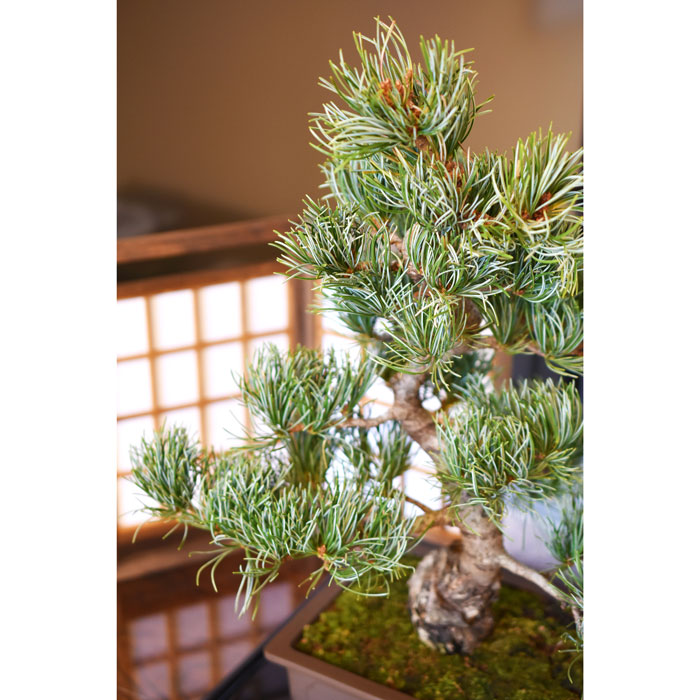
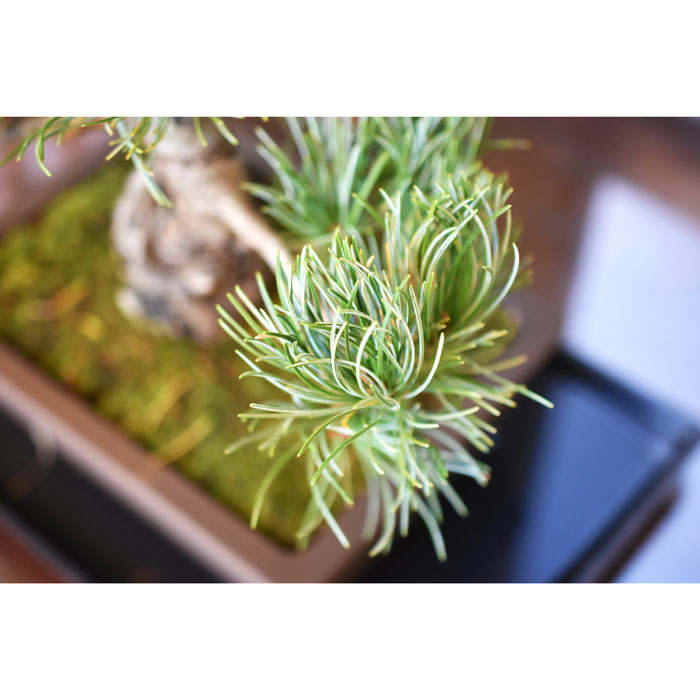
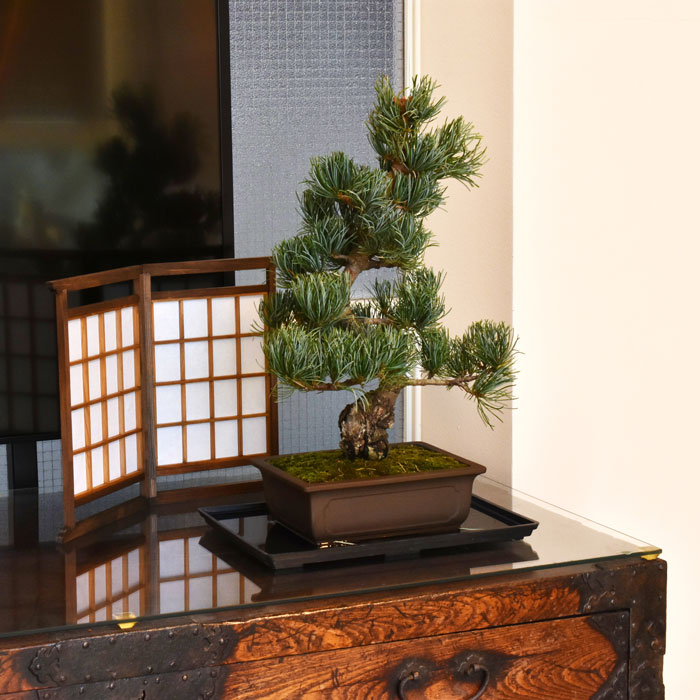
<Goyomatsu (Japanese white pine)>
This is a Bonsai of Goyomatsu (Japanese white pine) which was displayed in our Omotesando store.
“Go” means five, “yo” means leaf, and “matsu” means pine tree in Japanese.
Goyomatsu has its name because each twig has five leaves, but in different Kanji, “goyo” means business, and “matsu” means wait.
For this reason, the merchant had believed that Goyomatsu had special luck in business success, so they used to display it in New Year’s Day.
At our Omotesando store, there is a Bonsai which you can feel the change of the season, and it is switched every week.
Please take your time to watch the beautiful Bonsai when you come to our Omotesando store.
Engagement Rings of Japan Style READ MORE »
Wedding Bands of Japan Style READ MORE »
The north winds blow leaves from the trees
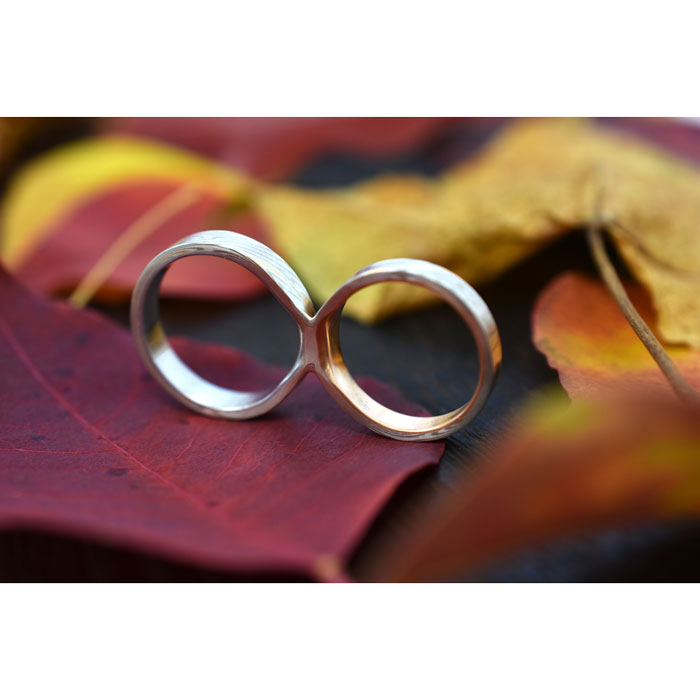
<The north winds blow leaves from the trees>
In ancient Japan, people used 72 micro season calendar (72Ko) which was made by dividing 12 seasons into 24 sub-seasons, and then splitting into three to give a total of 72 Ko, each lasting for about five days.
The calendar here marks the seasonal cycle of the natural world by allocating a series of evocative names to the different stages of the year, to illustrate the ever-changing beautiful landscape in Japan.
The 72Ko on November 27th is the 59th Ko
“The north winds blow leaves from the trees.”
In Japan, Tokyo felt its first “Kogarashi”, the first wintry wind this month and there has been a sudden drop in temperatures.
It seems that winter has begun. Take good care of yourself when the seasons change.
To cherish each moment in the changing seasons, Mokumeganeya will introduce the beautiful flowers and events in each season. Please enjoy the change of season with us.
Rouya-Gaki(Japanese persimmon)
2019.11.jpg)
2019.11.jpg)
<Rouya-Gaki (Japanese persimmon)>
This is a Bonsai of Rouya-Gaki (Japanese persimmon) which was displayed in our Omotesando store.
The fruit of Rouya-Gaki will change its color one by one from the soft yellow to bright red, so it has beautiful gradations during the growth process.
At our Omotesando store, there is a Bonsai which you can feel the change of the season, and it is switched every week.
Please take your time to watch the beautiful Bonsai when you come to our Omotesando store.
Wari-Kogai
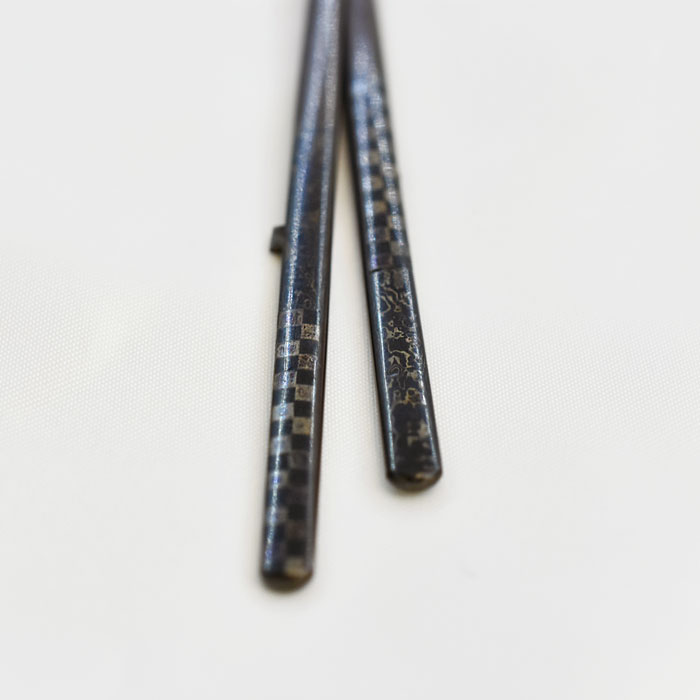
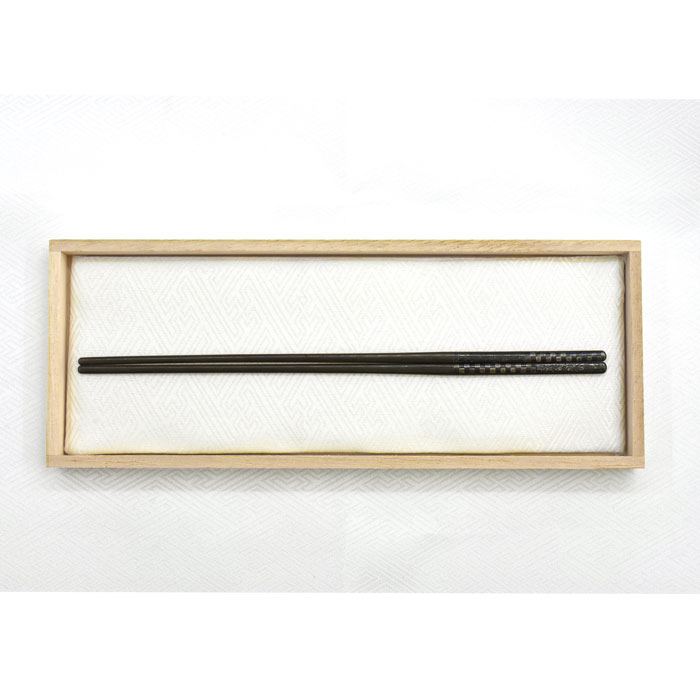
<Wari-Kogai>
A Wari-Kogai with an inlaid mokume-gane checkered pattern.
The Kogai was used to dress hair, and it was also used as sword fittings.
Since we believe that it is very important to convey Japanese traditional culture to the world,
Mokumeganeya will introduce the Japanese antiques and artworks made with Mokume Gane.
Sasanqua Flowers Bloom

②.jpg)
<Sasanqua Flowers Bloom>
In ancient Japan, people used 72 micro season calendar (72Ko) which was made by dividing 12 seasons into 24 sub-seasons, and then splitting into three to give a total of 72 Ko, each lasting for about five days.
The calendar here marks the seasonal cycle of the natural world by allocating a series of evocative names to the different stages of the year, to illustrate the ever-changing beautiful landscape in Japan.
The 72Ko on November 11th is the 55th Ko “Sasanqua flowers bloom.”
Sasanqua flowers bloom while other flowers starts to wither, so it has a flower language of “Single-minded” and “Power to overcome difficulties”.
It seems that winter has begun. Take good care of yourself when the seasons change.
To cherish each moment in the changing seasons, Mokumeganeya will introduce the beautiful flowers and events in each season. Please enjoy the change of season with us.
Ginkgo


<Ginkgo>
The Bonsai of Ginkgo at our Omotesando store will make you feel the arrival of autumn.
Ginkgo has a long lifetime, and has strong power to grow towards the sky, so Ginkgo has a flower language of “Solemnity” and “Longevity”.
For this reason, people in Japan believed that Ginkgo has the power to protect the building from fire, and used Ginkgo for the architecture very often in the old days.
At our Omotesando store, there is a Bonsai which you can feel the change of the season, and it is switched every week.
Please take your time to watch the beautiful Bonsai when you come to our Omotesando store.
Leaves turn red and yellow
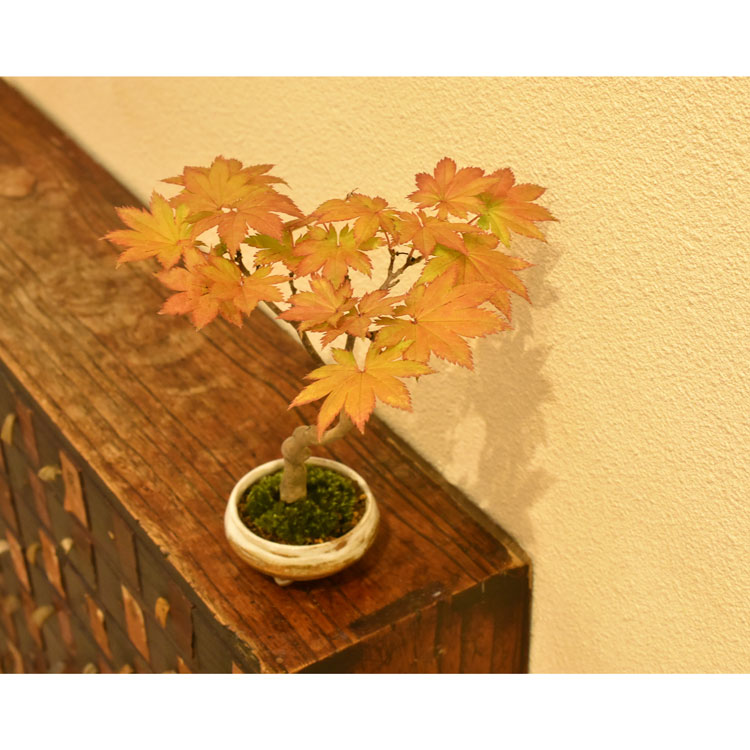
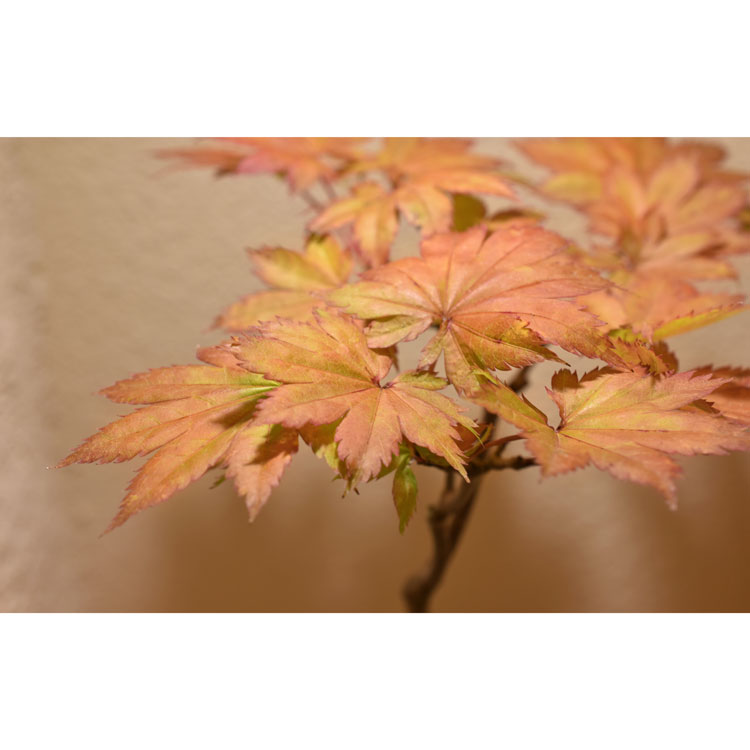
<Leaves turn red and yellow>
In ancient Japan, people used 72 micro season calendar (72Ko) which was made by dividing 12 seasons into 24 sub-seasons, and then splitting into three to give a total of 72 Ko, each lasting for about five days.
The calendar here marks the seasonal cycle of the natural world by allocating a series of evocative names to the different stages of the year, to illustrate the ever-changing beautiful landscape in Japan.
The 72Ko on November 2nd is the 54th Ko “Leaves turn red and yellow.”
During the Heian period in Japan (794~1185), the nobilities used to express the beauty of autumn leaves with Waka, the Japanese traditional poem in 31syllables, and compete for their sense of art.
As you can see, the autumn leaves were very popular among Japanese people from ancient times.
To cherish each moment in the changing seasons, Mokumeganeya will introduce you the beautiful flowers and events in each season. Please enjoy the change of season with us.
Tsuma-Kazari
.jpg)
.jpg)
<Tsuma-Kazari>
This is a decoration of Japanese traditional architecture which is called “Tsuma-Kazari”, and it was used to be placed beside the shrine’s roof.
The wave and crane is a typical auspicious omens motif in Japan and has a meaning of longevity.
We believe that it is very important to convey Japanese traditional culture to the world.
Please take a look at the interiors when you arrive at the store.
Chrysanthemums start blooming
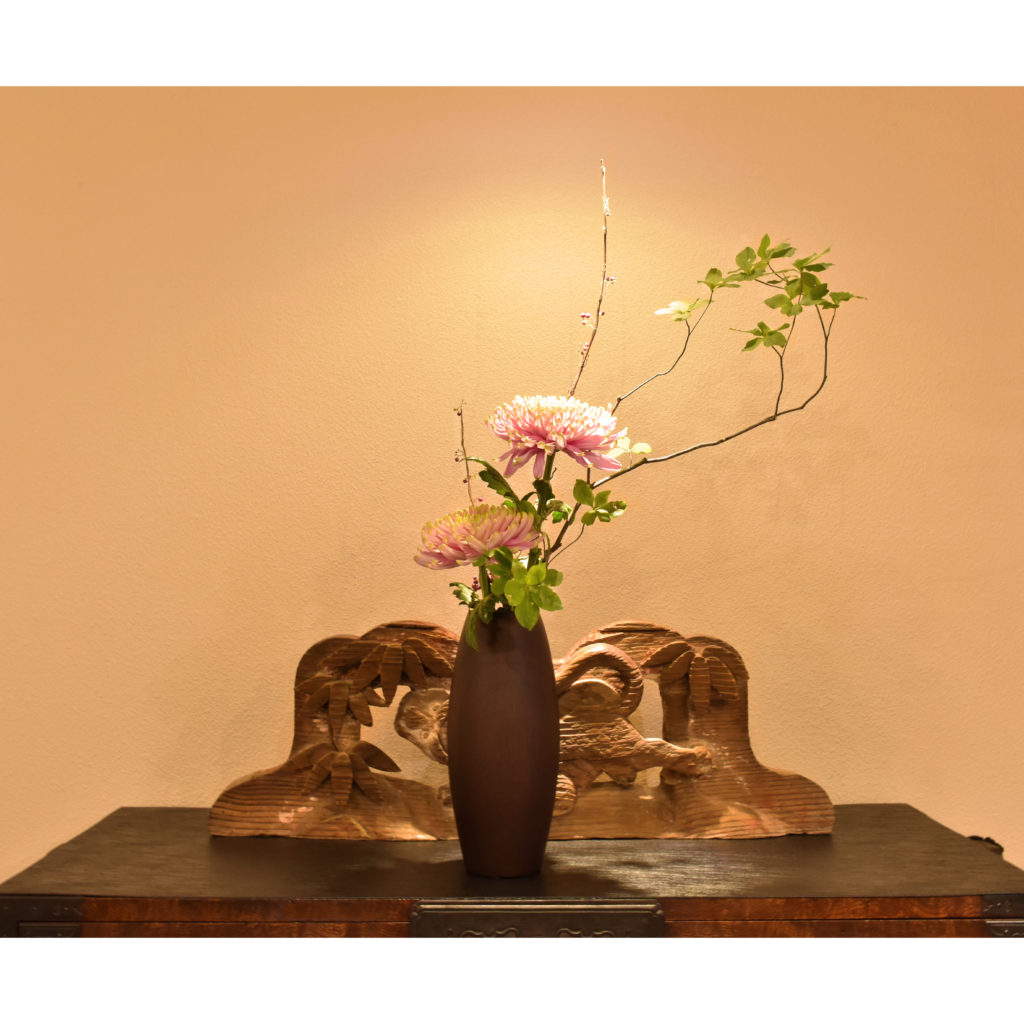
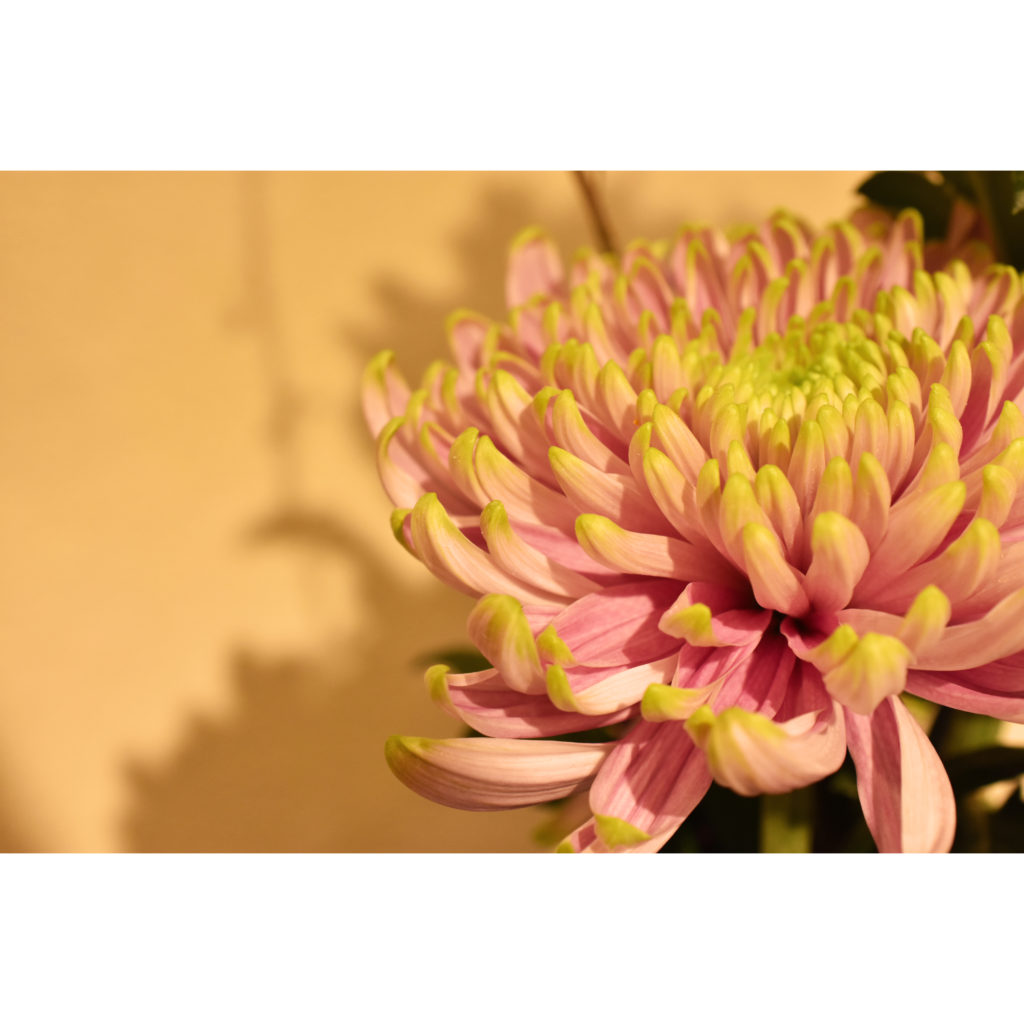
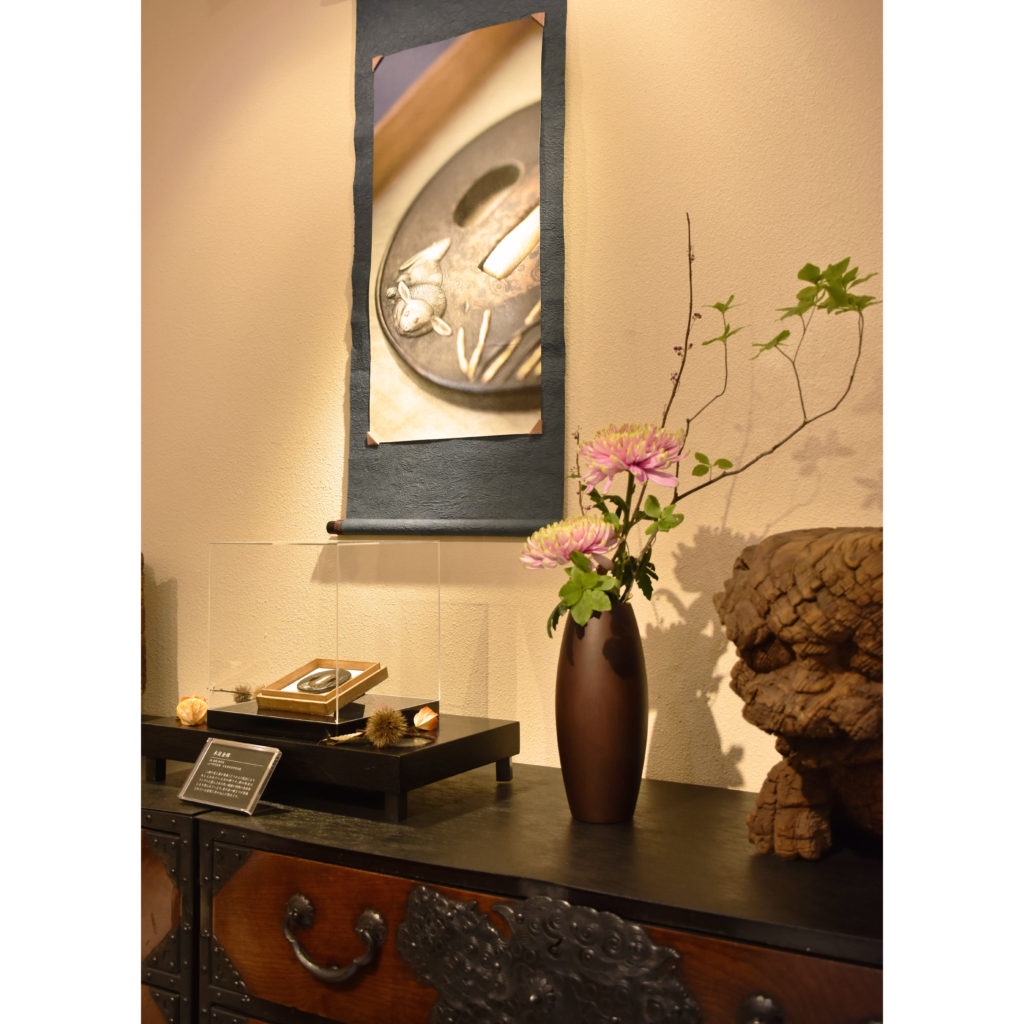
<Chrysanthemums start blooming>
In ancient Japan, people used 72 micro season calendar (72 Ko) which was made by dividing 12 seasons into 24 sub-seasons, and then splitting into three to give a total of 72 Ko, each lasting for about five days.
The calendar here marks the seasonal cycle of the natural world by allocating a series of evocative names to the different stages of the year, to illustrate the ever-changing beautiful landscape in Japan
The 72Ko on October 15th is the 52nd Ko “Chrysanthemums start blooming.”
In the old days in Japan, people believed that Chrysanthemums are effective for longevity, and had the custom to drink chrysanthemum sake, a rice wine infused with chrysanthemum.
To cherish each moment in the changing seasons, Mokumeganeya will introduce you the beautiful flowers and events in each season. Please enjoy the change of season with us.
Kozuka
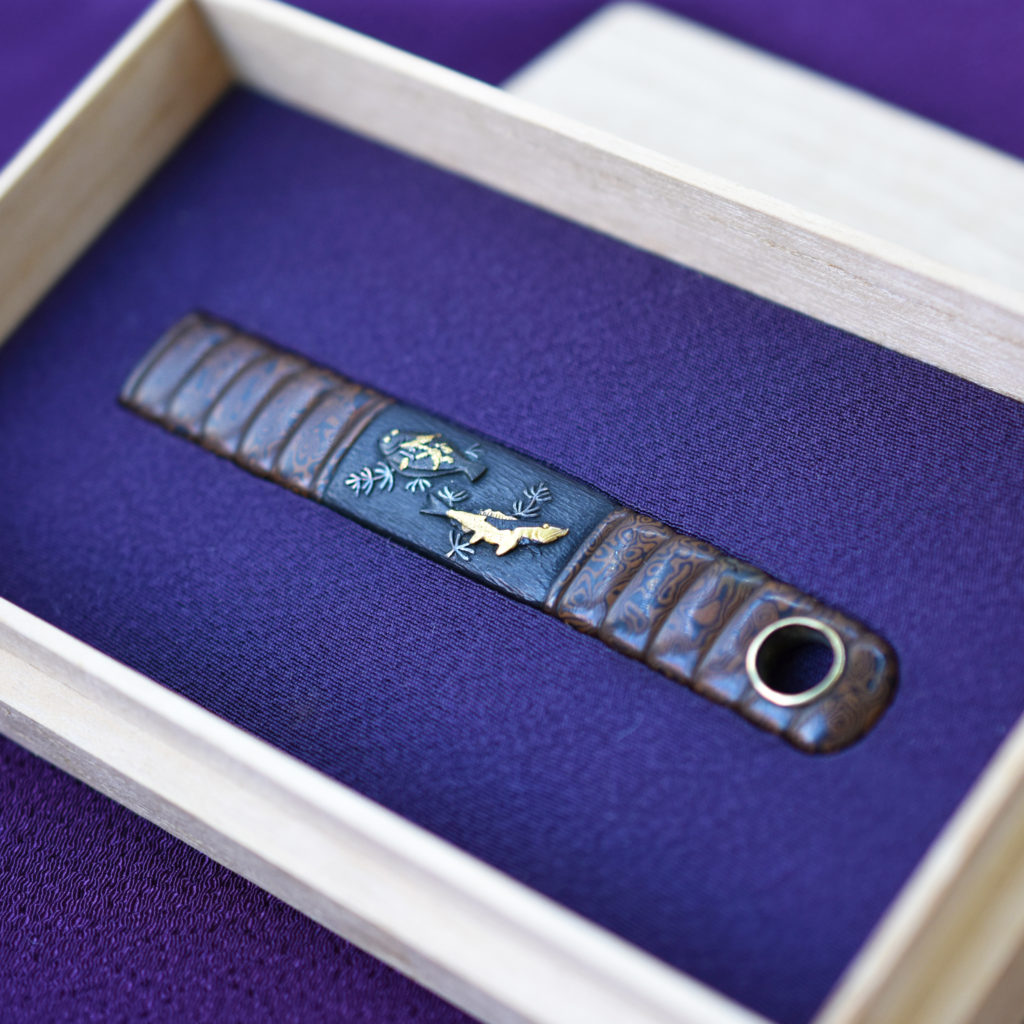
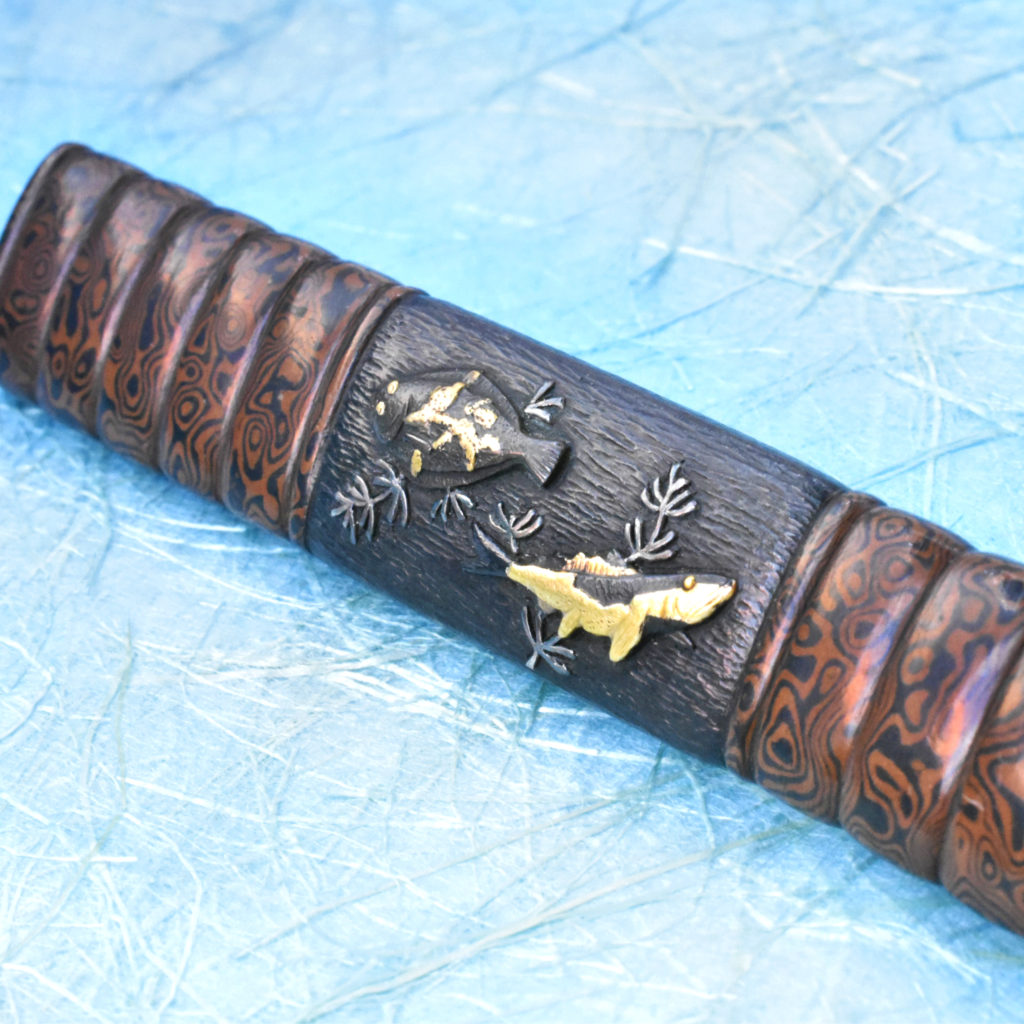
<Kozuka>
“Kozuka” is a small sword that is attached to the Japanese sword.
The design is depicting the peaceful scene under the sea, by inlaying the metals that are shaped into sea animals, to the center of the Kozuka.
The beautiful pattern of Mokume Gane placed on both sides of the center, makes you remind the wavy water surface that is flashed with sun reflection.
Since we believe that it is very important to convey Japanese traditional culture to the world, Mokumeganeya will introduce you the Japanese antiques and artworks made with Mokume Gane.


